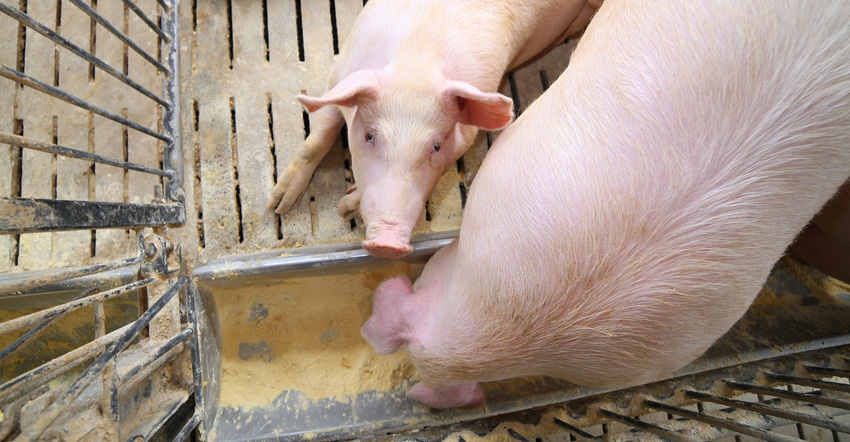May 27, 2021

It is time to do the opposite of conventional thinking when it comes to swine production — despite high corn costs, pork producers should feed more. Marcia Shannon, University of Missouri Extension swine specialist, says that today’s market prices are calling for higher market weights and farmers can still make money.
Typically, when feed prices rise, pork producers see profits decline. Many sell pigs at lower weights. However, this year is different, Shannon says, and today’s high market prices call for higher market weights even with rising feed prices.
Driven by packer demand, pig market weights continue to rise. Today’s average pig market weights exceed 280 pounds. “Pork producers still can afford to feed $6-per-bushel corn to heavier finish weights and make a net profit from feeding,” Shannon says.
Analyze ROI of feeding hogs
Shannon gives two examples.
As corn prices near $6 per bushel, hogs weighing 240 to 300 pounds at $60 per cwt make a positive return. This includes a marketing dock for pigs outside of the 240- to-300-pound live market weight and a 15-cent-per-pound charge for facilities and labor. Her model assumes that it takes 10 days to add 10 pounds with a decreased feed efficiency of 3.7 pounds.
Every 25-cents-per-bushel increase in corn prices drops profits by 11 to 96 cents, depending on the final market weight.

In a second scenario, Shannon looks at the effect of marketing weight when the base live market price is $100 per cwt with the same marketing dock and facility charges above. This remains profitable on 240- to- 300-pound hogs when corn goes to $6 per bushel.
Overall, with corn prices at $5 per bushel, pigs with live market hog prices at $100 per cwt make money. Every 25-cent-per-bushel increase in corn prices cuts profits by 13 to 93 cents, depending on the final market weight. Marketing at lower market weights cuts losses.

Stay alert on market flux
As conditions change, producers might want to set a price signal on feed costs and market prices to know when to begin selling based on their own operations.
In any market, Shannon recommends that producers fine-tune diets and focus on proper feed adjustments, feeder maintenance, grinding efficiency, diet formulations and feed quality.
Source: University of Missouri Extension, which is solely responsible for the information provided and is wholly owned by the source. Informa Business Media and all its subsidiaries are not responsible for any of the content contained in this information asset.
You May Also Like




